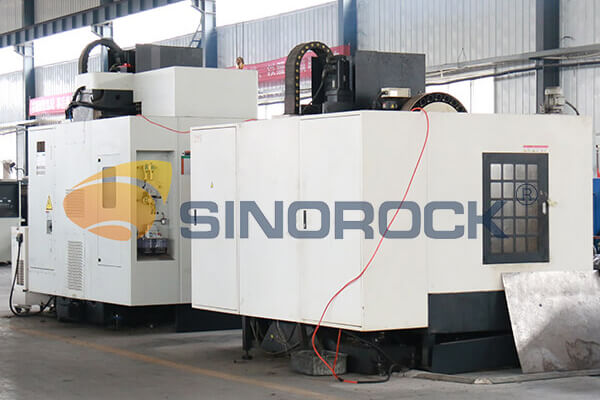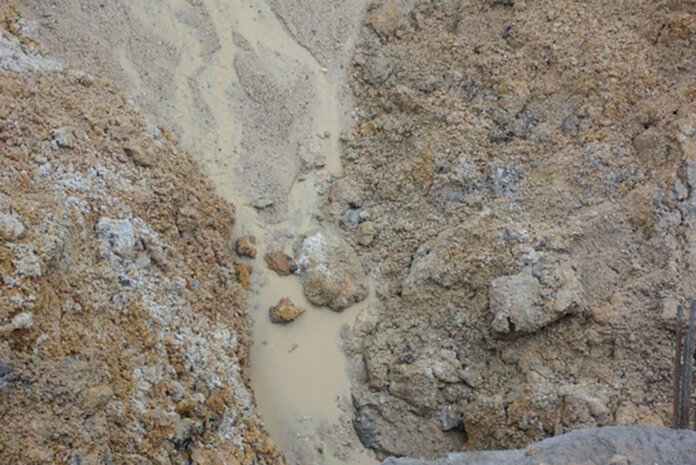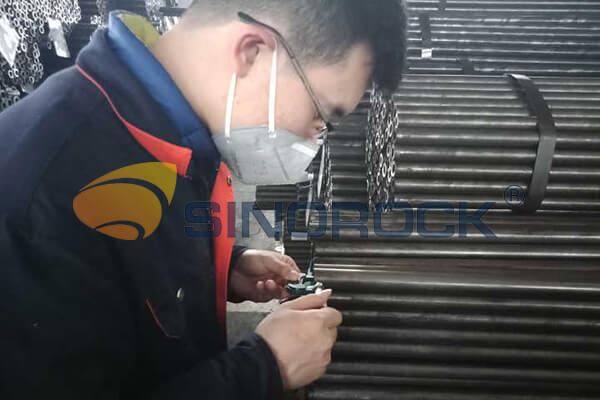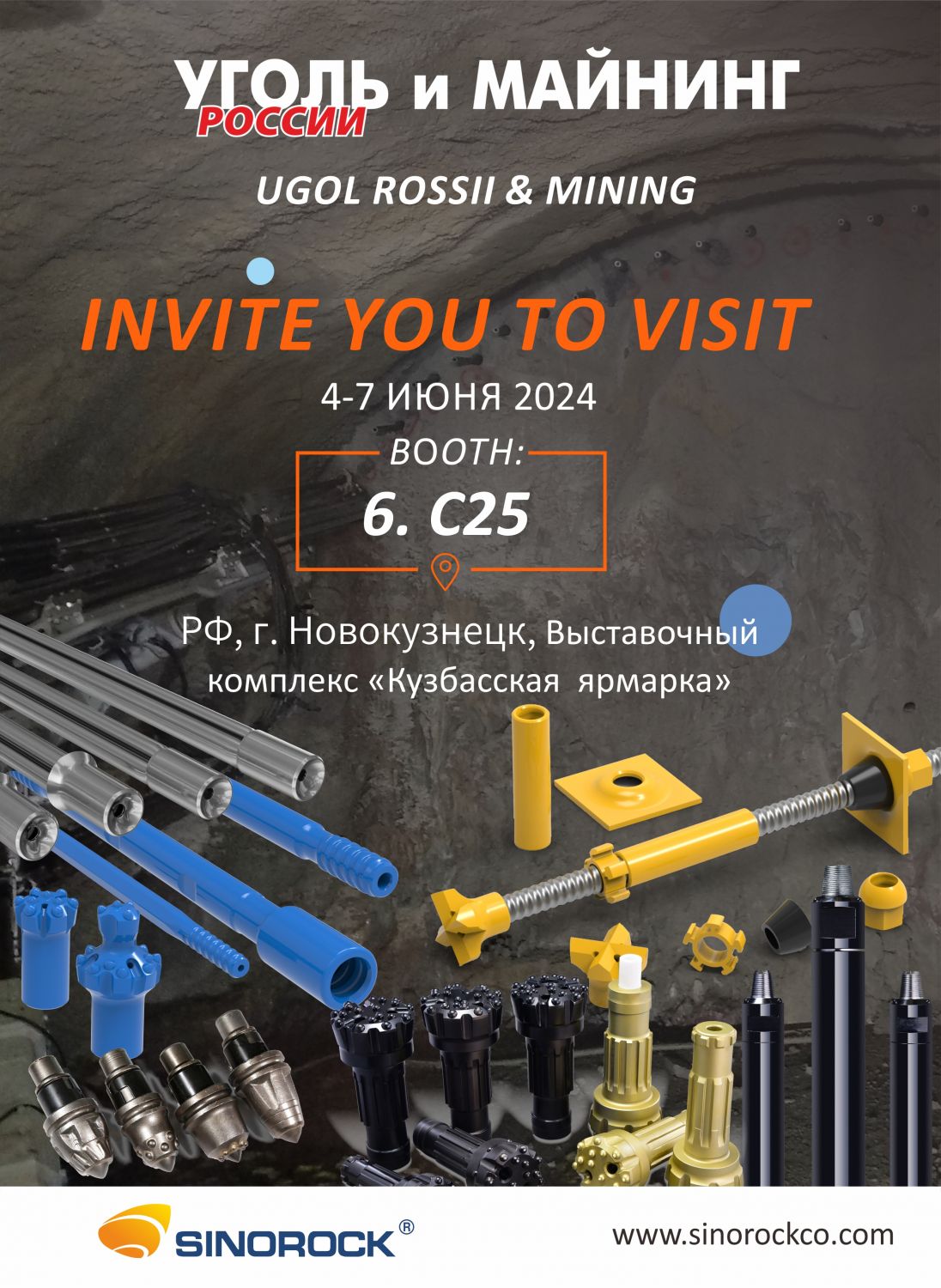Self-Drilling Anchor Bolt Construction in Complex Geological Slope
Time:2025-01-24From:sinorock View:
Introduction
In the world of civil engineering, constructing foundations in complex geological conditions can present significant challenges. Among the various technologies employed to mitigate these challenges, self-drilling anchor bolts have gained prominence, particularly for their efficiency and versatility in supporting slopes, tunnels, and foundations. This article explores the use of self-drilling anchor bolts in the construction of the P2 main tower of the Dongshuimen Yangtze River Bridge, located in a complex geological area between Changbin Road and Gang District Road. We will delve into the technical details of the construction, the methodology applied, and the resulting benefits of using self-drilling anchor bolts in such a project.

The Challenge: Complex Geological Conditions
The foundation excavation for the P2 main tower of the Dongshuimen Yangtze River Bridge presented significant challenges due to the complex geological conditions of the area. The slope stratum was primarily composed of backfilled materials such as sand pebbles, gravel, and construction waste. However, during excavation, large mudstone aggregates and irregular rock formations containing large cavities and cracks were encountered. These geological features posed substantial risks to the stability of the foundation, especially considering the height of the excavated face—18 meters—on the slope of Changbin Road.
In addition to the inherent geological risks, the excavation also had to account for the possibility of destabilizing the roadways, which were critical for traffic flow. With half of Changbin Road directly affected, any disruption could result in major traffic and logistical issues. The construction team needed a solution that not only stabilized the foundation but also minimized the impact on the surrounding infrastructure.
Self-Drilling Anchor Bolts: The Solution
In response to these challenges, the design and construction team chose to implement a solution combining self-drilling hollow anchor bolts and welded mesh shotcrete. Self-drilling anchor bolts, which integrate drilling, grouting, and anchoring functions into one process, proved to be an efficient and effective method for securing the foundation and preventing slope failure. These anchor bolts provided immediate stabilization, and when combined with shotcrete, they offered an effective method for protecting the excavation.
Components of Self-Drilling Anchor Bolts
Self-drilling anchor bolts consist of several key components, each of which plays a vital role in the anchoring process:
- Drill Bit: The drill bit is designed to penetrate the soil or rock, creating a hole for the anchor bolt to be inserted.
- Hollow Bar: The hollow bar serves as the anchor’s main structural component and is used to transport the grouting material during installation.
- Plate and Nut: The anchor plate distributes the load and the nut secures the bolt to the surface.
- Centralizer and Coupler: The centralizer ensures that the anchor is properly aligned, while the coupler connects multiple anchor bars when longer lengths are needed.
These components work together to form an anchor that can be drilled into the slope, grouted for enhanced stability, and anchored to provide long-term support.
Construction Process: From Excavation to Protection
Step 1: Site Preparation and Geological Survey
Before the construction of the self-drilling anchor bolts, the area underwent a comprehensive geological survey. The survey revealed that the geological conditions were unstable, with significant voids, cracks, and the presence of loose rock and debris. This initial analysis guided the design of the construction scheme, which was tailored to accommodate these irregularities.
Step 2: Installation of Self-Drilling Anchor Bolts
The first step in the actual construction process was drilling. The contractor selected φ32mm self-drilling hollow anchor bolts for the task, as they were ideally suited to the geological conditions. These bolts were inserted in three rows of varying lengths: 15 meters, 12 meters, and 8 meters. The placement of these bolts was carefully calculated to ensure maximum stability and load distribution.
Using a specialized drilling rig, the self-drilling anchor bolts were drilled into the rock mass, penetrating through the loose strata and filling the voids encountered. Once the desired depth was reached, the grouting process began. Grout was pumped into the hollow bars under pressure, ensuring that the grout filled all cavities and voids. This grouting process is crucial because it creates a solid bond between the anchor bolt and the surrounding rock, providing the necessary friction and resistance to hold the slope in place.
Step 3: Installation of Welded Mesh Shotcrete
Once the self-drilling anchor bolts were securely in place, the next step involved reinforcing the slope surface. Steel bar welded mesh with a diameter of φ6.5mm and spacing of 100mm by 100mm was placed on the slope. This mesh provided additional tensile strength to the slope, working in conjunction with the anchor bolts to prevent any potential movement or slippage of the soil or rock.
Shotcrete, a form of sprayed concrete, was then applied over the mesh. In this case, C20-grade concrete was used for its durability and strength. The shotcrete not only provided a further layer of protection but also helped seal the surface, preventing erosion and ensuring long-term stability.
Step 4: Drainage Holes for Water Management
One critical aspect of the construction was managing the drainage of water from the slope. Excess water can lead to erosion and weakening of the slope, particularly in areas with loose materials. To address this issue, drainage holes were strategically placed at a spacing of 3 meters and a diameter of 50mm. These drainage holes allowed water to escape, reducing the potential for hydrostatic pressure buildup behind the shotcrete layer.
Advantages of Using Self-Drilling Anchor Bolts
The use of self-drilling anchor bolts in this project provided several key benefits:
1. Efficiency in Drilling and Grouting: The self-drilling anchor bolts combined the drilling, grouting, and anchoring processes into a single operation. This integration significantly reduced the time and labor required to stabilize the slope, making the construction process more efficient.
2. Enhanced Stability: The use of self-drilling anchor bolts ensured that the foundation was securely anchored to the surrounding geological strata. The combination of grouting and anchoring provided a strong bond that resisted movement, even in the presence of cracks and voids.
3. Reduced Environmental Impact: The construction method minimized disturbance to the surrounding area. The ability to drill and grout without excessive excavation or disruption to the surrounding infrastructure meant that the project had a smaller environmental footprint compared to traditional stabilization methods.
4. Cost-Effective Solution: While the upfront costs of using self-drilling anchor bolts and shotcrete can be higher than traditional methods, the long-term benefits, including reduced maintenance costs and enhanced safety, make this approach cost-effective in complex geological conditions.
5. Safe Traffic Flow: A key goal of the construction was to ensure that traffic flow on Changbin Road was not disrupted. By using self-drilling anchor bolts and shotcrete, the construction team was able to stabilize the slope while keeping the road operational, thereby minimizing the impact on daily life and commerce.
Conclusion: Successful Foundation Protection
The use of φ32mm self-drilling hollow anchor bolts and welded mesh shotcrete in the construction of the P2 main tower of the Dongshuimen Yangtze River Bridge proved to be a successful strategy for foundation protection in complex geological conditions. The integration of drilling, grouting, and anchoring into one process not only improved construction efficiency but also ensured the safety of the excavation. The resulting slope stabilization provided a secure foundation for the bridge, while allowing for the continued safe operation of the nearby roads.
As this case study demonstrates, self-drilling anchor bolts are an effective and reliable solution for foundation protection in areas with challenging geological conditions. By combining innovative technology with best construction practices, engineers can ensure the stability of structures even in the most difficult environments.
latest news
-

- 3 Crucial Factors That Impact the Quality of Self-Drilling Hollow Bolts
- Time:2025-01-26From:This Site
- As we all know, the quality of the self-drilling hollow bolts is vital to the whole project. It determines if the project is safe for the people in future use. Then, what will affect the quality of the self-drilling hollow bolts?
- View details
-

- Self-Drilling Anchor Bolt Construction in Complex Geological Slope
- Time:2025-01-24From:This Site
- During construction, Self-drilling hollow anchor bolt integrates drilling, grouting and anchoring functions, which significantly improves drilling efficiency. And under the action of pressure pump, the grouting in the rock strata and voids is full, which ensures the grouting thickness and anchoring effect.
- View details
-

- How Does Self-drilling Rock Bolt Drill in Quicksand Geological Condition?
- Time:2025-01-19From:This Site
- This in-depth guide explores how self-drilling rock bolts function in quicksand geological conditions, covering the challenges, construction methods, and best practices for ensuring effective anchorage in unstable, fluidic soil layers.
- View details
-

- Quality Control: the Vital Factor of A SDA Bolt Factory
- Time:2025-01-09From:This Site
- Sinorock’s comprehensive quality control system, from supplier management to outgoing inspections, ensuring the highest standards for self-drilling anchor bolts in construction.
- View details
-
.png)
- International Women's Day with Strawberry-picking
- Time:2024-03-09From:This Site
- Marked the annual observance of International Women's Day, and to commemorate this significant event, Sinorock organized a special strawberry-picking event exclusively for its female employees.
- View details
-

- Celebrate the 74th anniversary of the founding of the People's Republic of China
- Time:2023-10-01From:This Site
- On October 1st every year, we observe the annual National Day, commemorating the birth of our beloved motherland.
- View details
-
.jpg)
- SINOROCK to Attend EXPOMINA PERÚ 2024 in Lima, Peru
- Time:2024-08-10From:This Site
- Sinorock to Attend EXPOMINA PERÚ 2024 in Lima, Peru
- View details
-
.jpg)
- SINOROCK to Participate in MINING AND METALS CENTRAL ASIA 2024
- Time:2024-08-08From:This Site
- SINOROCK to Participate in MINING AND METALS CENTRAL ASIA 2024
- View details
-

- SINOROCK Gears Up for UGOL ROSSII & MINING 2024 with Custom Mining Solutions
- Time:2024-05-15From:This Site
- SINOROCK is thrilled to announce its participation in the highly anticipated 32nd International Trade Fair for Mining Technology, UGOL ROSSII & MINING 2024. The event will take place at the Exhibition complex "Kuzbass Fair" in Novokuznetsk, Kemerovo region - Kuzbass, Russia, from June 4th to 7th, 2024.
- View details
 Download
Download 


